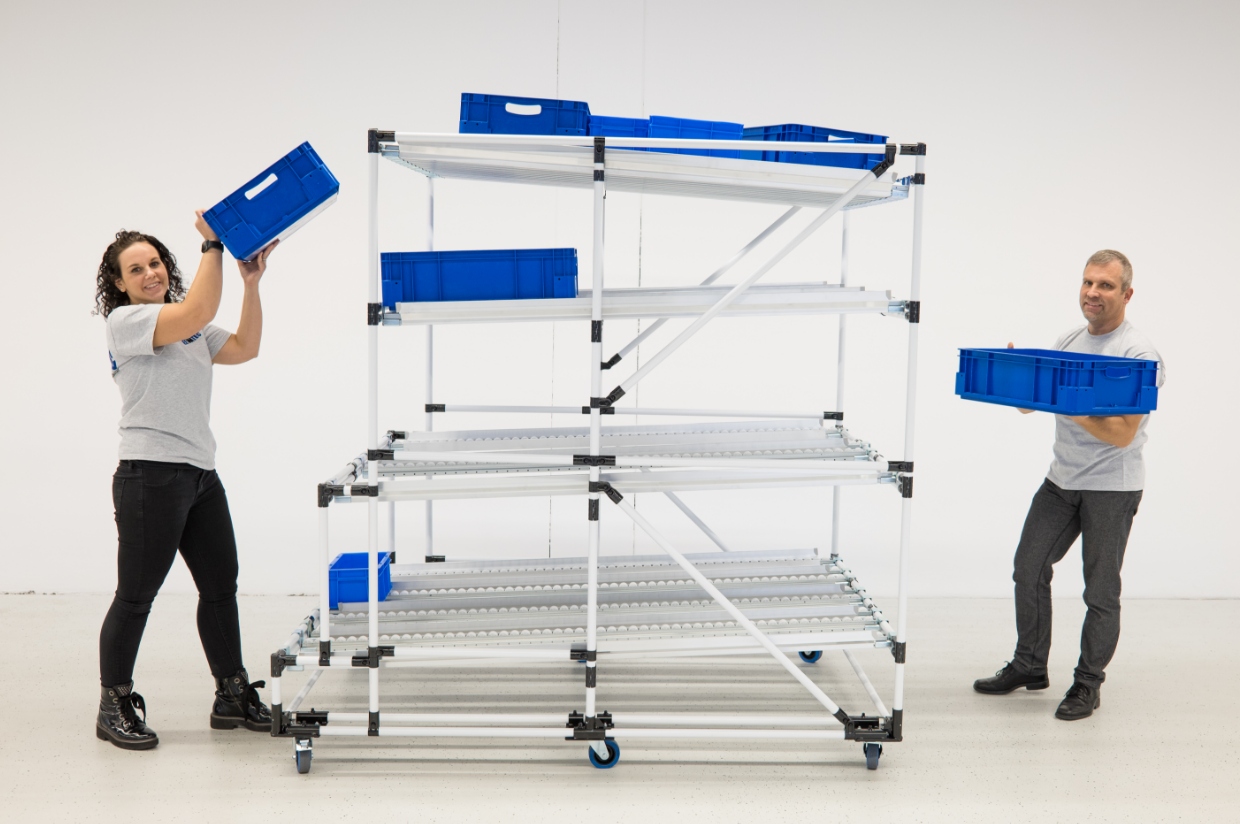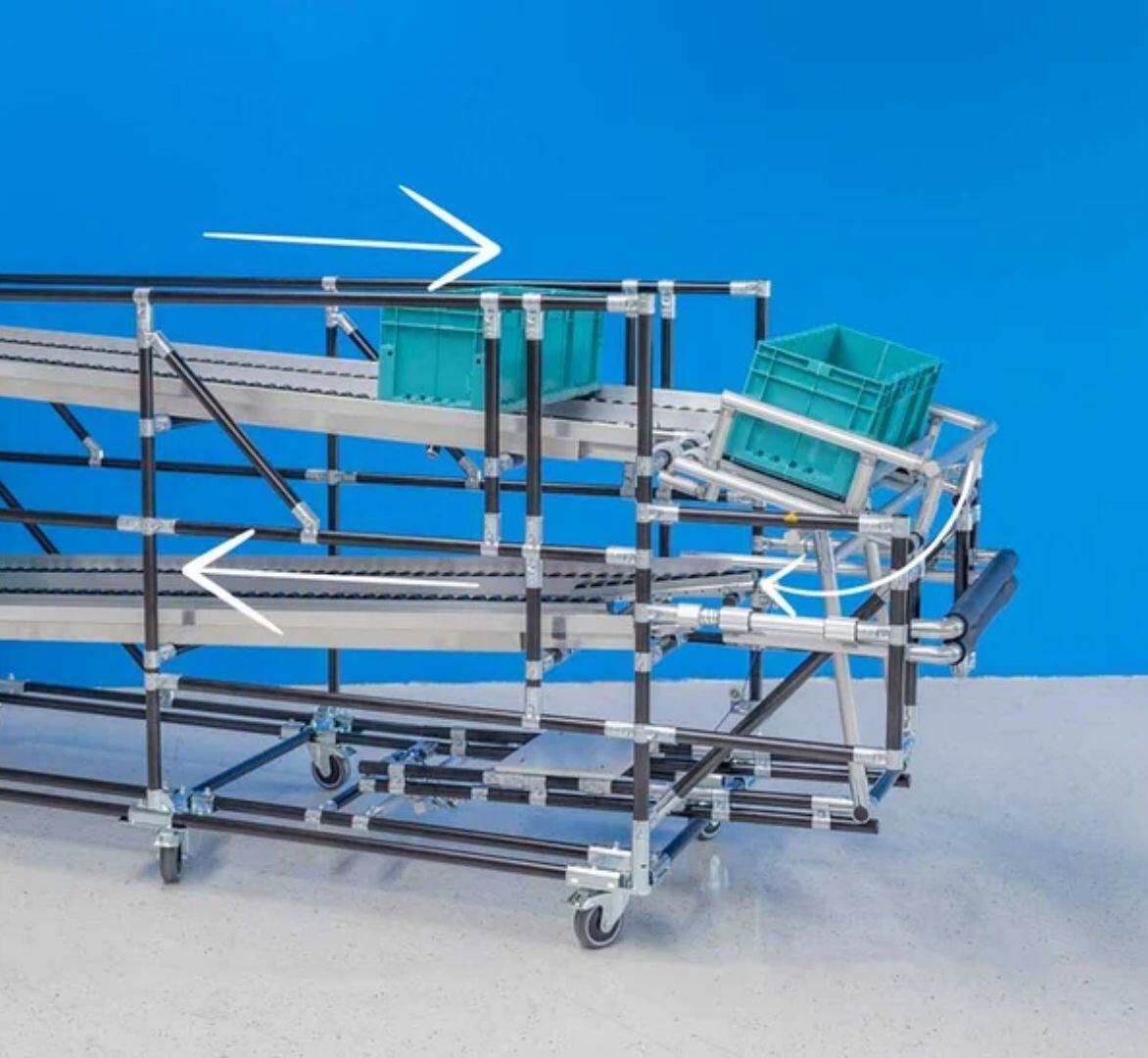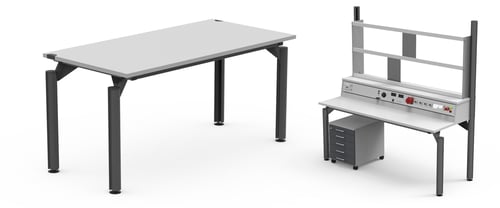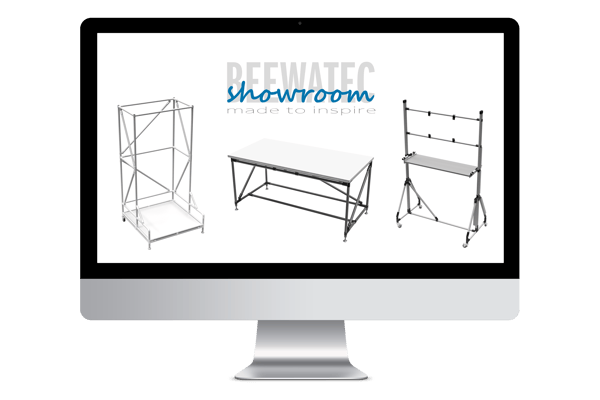In the dynamic world of manufacturing, staying competitive requires more than just maintaining the status quo. Embracing a culture of Continuous Improvement (CI) is essential for achieving operational excellence and long-term success. This article delves into the concept of continuous improvement process, its foundational principles, and practical methodologies to implement it effectively in your organization.
What is Continuous Improvement?
Continuous Improvement is an ongoing effort to enhance products, services, or processes incrementally. It follows a continuous improvement model, which emphasizes structured, ongoing refinements. Unlike radical changes, CI focuses on small, consistent improvement efforts that collectively lead to significant improvement over time. This approach aligns with lean manufacturing and Six Sigma principles, aiming to eliminate waste, reduce waste, and improve quality. By emphasizing quality management, organizations can ensure that customer satisfaction remains a priority. CI fosters a proactive culture where employees at all levels contribute to incremental improvement by identifying root causes of inefficiencies and implementing effective improvement techniques to improve processes continuously.

The Core Principles of Continuous Improvement
Implementing continuous improvement successfully hinges on several key principles:
- Customer Focus: Prioritize understanding and meeting customer needs and expectations.
- Employee Involvement: Empower employees to identify areas for improvement and contribute ideas.
- Process-Centric Approach: Analyze and enhance processes to reduce variability and eliminate waste.
- Data-Driven Decision Making: Utilize data and metrics to inform decisions and measure progress.
- Standardization: Develop and implement standard procedures to sustain improvements.
Methodologies for an Continuous Improvement Process
.png?width=1080&height=1080&name=EN_Methodologies%20for%20an%20Continuous%20Improvement%20Process%20(4).png)
Several established methodologies can guide organizations in their CI journey:
1. Plan-Do-Check-Act (PDCA) Cycle
The PDCA cycle is a four-step iterative process for implementing change:
- Plan: Identify an area for improvement and devise a strategy.
- Do: Implement the plan on a small scale to test its effectiveness.
- Check: Evaluate the results to determine if the desired outcome was achieved.
- Act: If successful, standardize the change; if not, refine the plan and repeat the cycle.
2. Kaizen
Originating from Japan, Kaizen translates to "change for better." It emphasizes continuous, small-scale improvements involving employees at all levels. Kaizen fosters a culture where everyone is responsible for suggesting and implementing enhancements.
3. Six Sigma
Six Sigma is a data-driven methodology aimed at reducing defects and variability in processes. By utilizing statistical tools and techniques, Six Sigma seeks to improve quality and efficiency systematically.
Benefits of Continuous Improvement
Adopting a CI approach offers numerous advantages:
- Enhanced Efficiency: Streamlined processes lead to reduced waste and increased productivity.
- Improved Quality: Ongoing refinements result in higher-quality products and services.
- Employee Engagement: Involving staff in improvement initiatives boosts morale and fosters a sense of ownership.
- Customer Satisfaction: Better products and services lead to increased customer satisfaction and loyalty.
- Competitive Advantage: Continuous advancements position organizations ahead of competitors.
Structure of a Continuous Improvement Process
A Continuous Improvement (CI) process is essential for maintaining efficiency, quality, and competitiveness in production. A well-defined structure ensures that improvements are systematic, sustainable, and aligned with business objectives. Below are the key components of an effective continuous improvement process.
1. Leadership Commitment
- Strong leadership support is crucial for CI success.
- Management must set clear objectives and provide resources for improvement initiatives.
- Leaders should foster a culture where employees are encouraged to suggest and implement changes.
2. Employee Involvement and Training
- Employees at all levels should actively participate in identifying and solving problems.
- Providing training in Lean principles, Six Sigma, or Kaizen empowers employees to contribute effectively.
- Creating cross-functional teams ensures diverse perspectives in problem-solving.
3. Standardized Methodologies
A structured CI process follows established methodologies for efficiency:
- PDCA (Plan-Do-Check-Act): A cyclical model for testing and implementing changes.
- Kaizen: Encourages small, incremental improvements driven by employees.
- Six Sigma: Focuses on reducing defects and variability using data-driven approaches.
4. Data-Driven Decision Making
- Continuous improvement should be guided by measurable data.
- Implement key performance indicators (KPIs) to track progress.
- Use root cause analysis (e.g., the 5 Whys, Fishbone Diagram) to address recurring issues.
5. Standardization and Documentation
- Successful improvements should be documented and standardized for long-term implementation.
- Work instructions and standard operating procedures (SOPs) should be updated accordingly.
- Standardization ensures consistency and prevents regression.
6. Feedback and Continuous Iteration
- Encourage a feedback loop where employees provide insights on implemented changes.
- Regularly review processes through audits and team discussions.
- Continuous iteration ensures sustained improvement over time.
7. Technology and Automation
- Digital tools such as real-time monitoring systems enhance efficiency.
- Automation can reduce manual errors and streamline repetitive tasks.
- Visualization tools (e.g., dashboards, shop floor management systems) aid in quick decision-making.
A structured Continuous Improvement Process ensures long-term operational excellence. By integrating leadership commitment, employee involvement, data-driven strategies, and standardized methodologies, companies can foster a culture of ongoing enhancement. Implementing CI effectively results in reduced waste, improved quality, and increased competitiveness.
Continuous Improvement Process
.png?width=1080&height=1080&name=EN_Continuous%20Process%20Improvement%20Cycle%20(5).png)
In today’s competitive landscape, businesses must continuously refine their processes to enhance efficiency, reduce waste, and maintain a competitive edge. The Continuous Process Improvement (CPI) Cycle provides a structured approach to achieving these goals. By following a systematic methodology, organizations can streamline operations, improve quality, and drive innovation.
The CPI Cycle consists of six key stages that ensure a structured and effective approach to process optimization:
1. Map the Process
The first step is to document and visualize the current process. This helps identify inefficiencies and areas for improvement. Tools like Value Stream Mapping (VSM) are often used to provide a clear overview of workflows and material or information flow.
2. Identify Issues
Once the process is mapped, the next step is to analyze existing inefficiencies, bottlenecks, and quality issues. Techniques such as Root Cause Analysis (RCA), the 5 Whys, and Pareto Analysis help pinpoint the main sources of problems.
3. Plan Process Improvements
After identifying issues, businesses must develop a structured plan to address them. This involves:
- Eliminating waste and non-value-added activities using Lean principles
- Improving quality through Six Sigma methodologies
- Implementing automation and digital solutions where applicable
4. Implement Changes
Execution is a critical step in the CPI Cycle. Changes should be introduced systematically while minimizing disruptions to ongoing operations. Change Management strategies ensure smooth adoption by employees and stakeholders.
5. Review Performance of Improvements
Measuring the impact of changes is essential to determine their effectiveness. Organizations use Key Performance Indicators (KPIs), Overall Equipment Effectiveness (OEE), and productivity metrics to evaluate improvements and identify any remaining gaps.
6. Optimize and Repeat
The final step ensures that process improvements are standardized and sustained. Continuous monitoring helps identify new opportunities for optimization, ensuring an ongoing cycle of refinement and innovation.
How to Establish a Continuous Improvement Process in Production
In today's competitive manufacturing landscape, Continuous Improvement (CI) is essential for enhancing efficiency, reducing waste, and improving quality. Establishing a structured CI process in production ensures sustainable progress and long-term success. Below are the key steps to implement an effective CI system.
.png?width=1080&height=1080&name=EN_How%20to%20Establish%20a%20Continuous%20Improvement%20Process%20in%20Production%20(3).png)
1. Develop a Continuous Improvement Culture
A CI process begins with a cultural shift where every employee is encouraged to seek and suggest improvements.
- Leadership commitment: Management must actively support and communicate the importance of CI.
- Employee involvement: Encourage workers to share improvement ideas and take ownership of changes.
- Training and awareness: Provide education on Lean, Kaizen, or Six Sigma to empower employees with problem-solving skills.
2. Define Clear Goals and Objectives
Establish measurable goals aligned with company priorities:
- Improve production efficiency.
- Reduce defects and waste.
- Optimize material flow.
- Enhance worker safety and ergonomics.
Use SMART goals (Specific, Measurable, Achievable, Relevant, Time-bound) to ensure clear direction.
3. Implement a Structured CI Methodology
Select a proven improvement methodology to guide the process:
- PDCA Cycle (Plan-Do-Check-Act): A four-step iterative method for implementing change.
- Kaizen: Continuous small improvements driven by employees.
- Six Sigma: Data-driven approach to minimize defects and variability.
- Lean Manufacturing: Focuses on eliminating waste and optimizing production flow.
4. Identify Improvement Areas Using Data
Use data analysis to determine areas that need improvement:
- Conduct Value Stream Mapping (VSM) to analyze material and process flow.
- Utilize Key Performance Indicators (KPIs) to track efficiency, downtime, and waste levels.
- Apply root cause analysis (5 Whys, Fishbone Diagram) to identify problems.
5. Encourage Collaboration and Problem-Solving
- Form cross-functional teams to tackle improvement initiatives.
- Use daily Shop Floor Management meetings to discuss progress and challenges.
- Foster a culture of open communication and continuous learning.
6. Standardize and Sustain Improvements
Once an improvement is successful, standardize the new process:
- Update Standard Operating Procedures (SOPs) and work instructions.
- Train employees on the revised processes.
- Monitor implementation to ensure sustained improvements.
7. Monitor, Review, and Iterate
Continuous improvement is an ongoing process:
- Regularly assess performance metrics.
- Gather feedback from employees and customers.
- Adjust strategies based on new insights and evolving business needs.
8. Leverage Technology and Automation
Modern digital tools can enhance CI efforts:
- Shop Floor Management software for real-time process monitoring.
- Automation solutions like Low-Cost Automation (LCA) and Karakuri systems to optimize production.
- Ergonomic workstations that adapt to worker needs for better efficiency and comfort.
Establishing a Continuous Improvement Process in production requires a structured approach involving leadership, employee engagement, data-driven decision-making, and standardized methodologies. By fostering a CI culture and leveraging the right tools, businesses can continuously optimize their production processes, reduce waste, and stay ahead in the competitive market.
How BeeWaTec Supports Continuous Improvement in Manufacturing
At BeeWaTec, we help businesses implement Continuous Improvement (CI) by providing innovative solutions that enhance efficiency, reduce waste, and optimize workflows. Our modular systems, ergonomic workstations, and lean production solutions empower companies to continuously refine their processes for greater productivity and long-term success.
BeeWaTec’s Contribution to Continuous Improvement
1. Lean Manufacturing Solutions
Continuous Improvement focuses on eliminating waste and optimizing production. BeeWaTec provides:
- Modular pipe and joint systems – Easily adaptable structures for workstations, flow racks, and carts to support evolving production needs.
- Flow racks – Improve material handling and reduce unnecessary movement, enabling just-in-time (JIT) production.
- Conveyor systems – Automate material flow, reducing manual handling and improving efficiency.

2. Ergonomic and Flexible Workstations
Employee well-being and efficiency play a key role in Continuous Improvement. BeeWaTec’s ergonomic workstations:
- Reduce fatigue and increase productivity.
- Support Kaizen principles by allowing continuous adaptations based on worker feedback.
- Are modular, allowing for quick adjustments without major overhauls.
3. Low-Cost Automation (LCA) & Karakuri
BeeWaTec promotes Low-Cost Automation - LCA to streamline operations with minimal investment.
- Karakuri solutions – Utilize mechanical energy to automate simple tasks without electricity, increasing efficiency sustainably.
- Wheel Me mobile robots – Automate material transport, reducing errors and labor-intensive processes.

4. Shop Floor Management & Visualization Tools
CI relies on transparency and real-time monitoring. BeeWaTec’s Shopfloor board and digital solutions like BEEVisio:
- Help teams visualize performance metrics.
- Enable quick problem-solving using Lean methods.
- Support PDCA cycles for continuous optimization.
5. Customized Solutions for Process Optimization
Every company’s CI journey is unique. BeeWaTec provides:
- Tailor-made solutions based on lean production principles.
- Scalable systems that grow with your business needs.
- Expert consulting to identify and implement the best process improvements.
BeeWaTec supports Continuous Improvement by offering modular, ergonomic, and automated solutions tailored to Lean and Kaizen principles. Whether through Low-Cost Automation, ergonomic workstations, or visual management tools, we empower companies to enhance efficiency, eliminate waste, and drive ongoing success.
%20Implementation%20Guide.png?width=268&height=379&name=EN_Continuous%20Improvement%20(CI)%20Implementation%20Guide.png)
DOWNLOAD NOW!
Continuous Improvement (CI) Implementation Guide
Download this Guide to help you Continuous Improvement (CI) Implementation in your company effectively.
Download for freeContinuous Improvement (CI) Implementation Guide
After you have filled out and sent the form, you will receive the guide immediately by e-mail.
Conclusion
Continuous Improvement is the key to sustained success in manufacturing. By fostering a culture of continuous improvement, companies can improve efficiency, product quality, and employee engagement while staying competitive in a rapidly evolving market. Identifying opportunities for improvement and implementing improvement initiatives ensures long-term success.
Implementing continuous improvement methodologies like PDCA, Kaizen, and Six Sigma ensures a structured approach to optimizing processes and eliminating inefficiencies. However, achieving these improvements requires the right improvement tools and solutions.
At BeeWaTec, we support continuous improvement efforts by providing modular, ergonomic, and automation-driven solutions that align with Lean and Kaizen principles. From flexible workstations and flow racks to Low-Cost Automation and digital shop floor management tools, we help businesses identify areas for improvement, reduce waste, and drive long-term operational excellence.
Are you ready to take your continuous improvement strategy to the next level? Contact BeeWaTec today and discover how our solutions can transform your manufacturing processes.
Optimize Continuous Improvement With Personalized Solutions
With our modular system you can implement any solution you need. Discover your possibilities, existing solutions or build your own material flow system with BEEVisio in 3D.




_Web_01_01.jpg?width=1240&name=Beewatec-3-(37)_Web_01_01.jpg)


